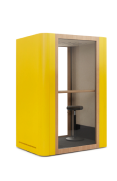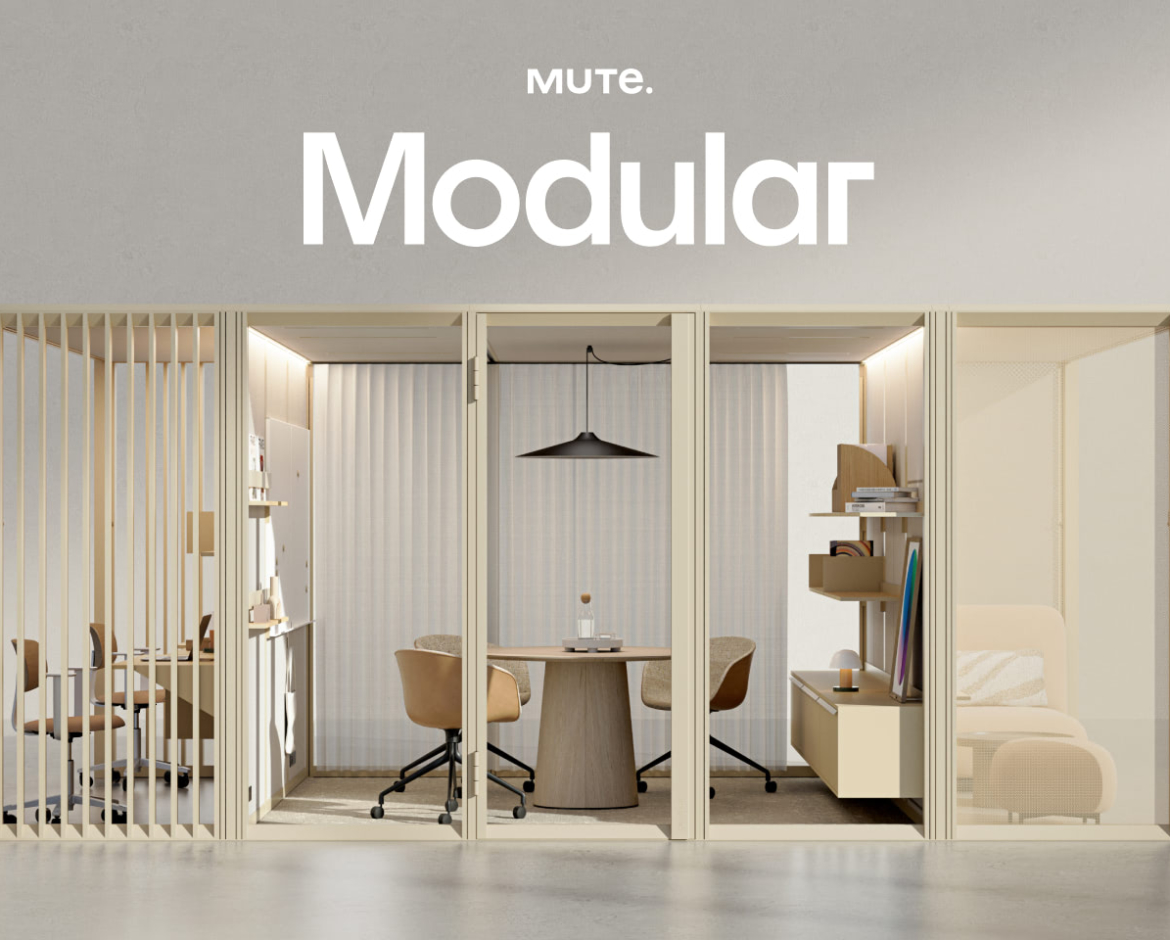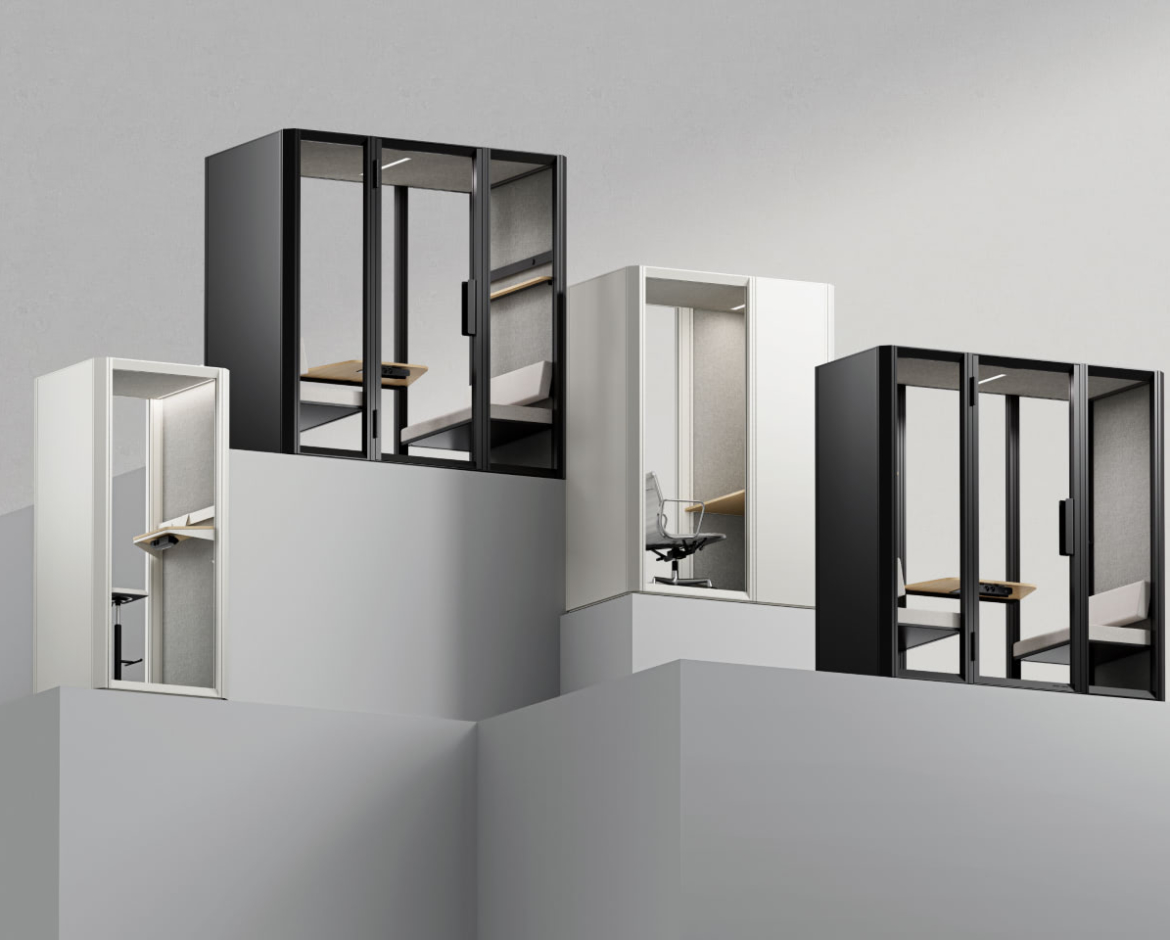In extraordinarily challenging times, adaptable office designs can help landlords lower property construction, renovation, and maintenance costs, attract new tenants, and become more sustainable.
Property owners encounter a unique set of challenges in today’s rapidly changing work landscape. Due in part to the enduring post-pandemic hybrid work model, many companies are hesitant to sign long-term leases as they seek to protect themselves from unnecessary costs and potential market changes.
This has resulted in a major problem for landlords: high vacancy rates. According to Moody Analytics, nearly 20 percent of offices in the U.S. are sitting empty – some of the highest levels in recent decades. These high vacancy rates and tenants’ understandable hesitation to commit to office arrangements make it even more critical for property owners to attract potential tenants.
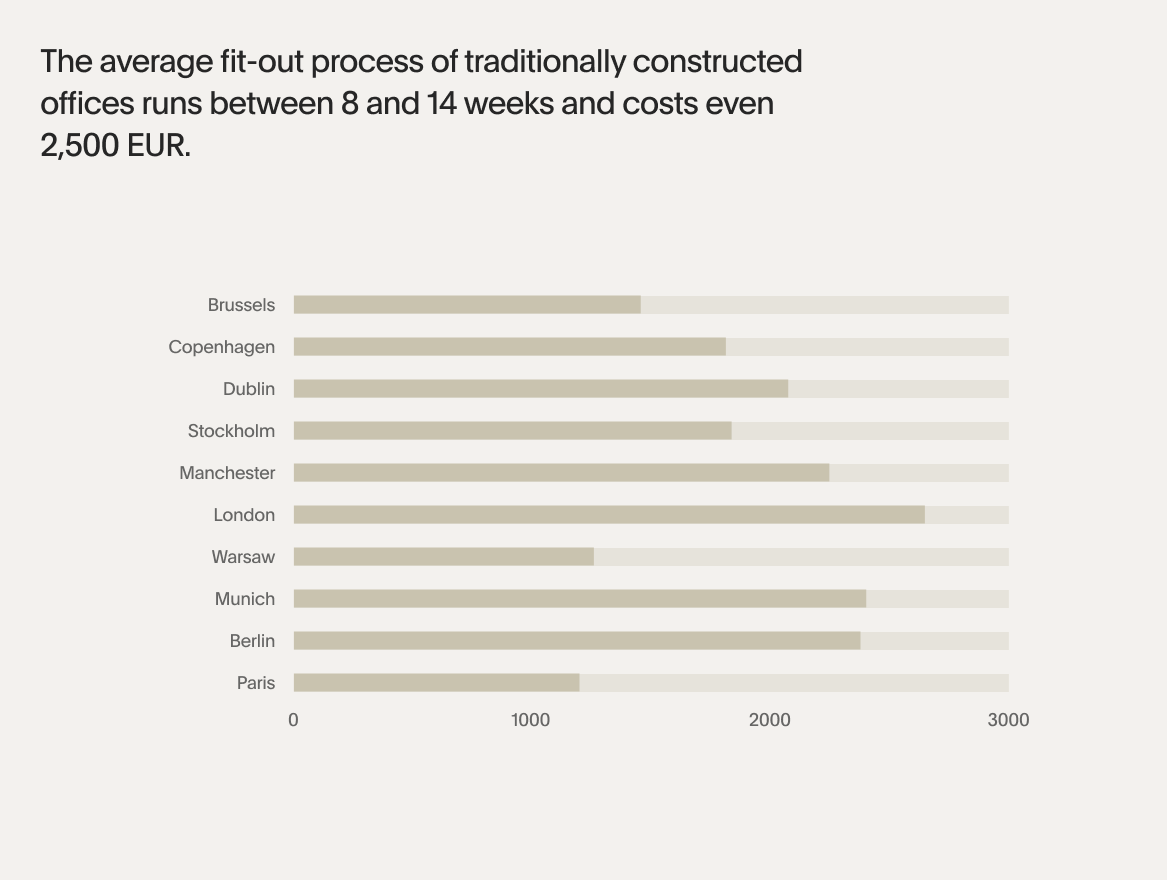
Source: Q4 2023 Preliminary Trend Announcement, Moody’s
The Moody Analytics report highlights how tenant requirements have shifted in response to the changing world of work in recent years, writing that “properties which offer flexible or smaller configurations are particularly attractive to tenants who decided to keep the physical office footprint for branding, purposeful gathering, training, and collaboration purposes.”
Adaptable office architecture is, therefore, becoming a fundamental design element of property owners’ portfolios. It includes implementing solutions like premade rooms, hubs, and spaces that prioritize flexibility and, therefore, make for economical and sustainable offices. Any relocation, updates, and reconfigurations become quick and easy.
Smaller Offices, Higher Standards
The COVID-19 pandemic and its aftermath left organizations turning to hybrid work models and downsizing offices. In fact, 50 percent of the world’s largest businesses (50,000 employees or more) expect to continue to shrink their global workspaces. Despite the trend to downsize, the form and quality of workspaces matter more than ever.
According to a recent Deloitte study on the 2024 commercial real estate outlook, “Newer, high-quality assets continue to significantly outperform the rest as the flight to quality accelerates. The rush for designs that accommodate hybrid work strategies has also contributed to the absorption of over 100 million square feet of unused space. That means the function of workspaces and how they lend themselves to workforce needs matter to tenants more than ever too.
Employees come to the office to focus but also to socialize andcollaborate in ways they simply cannot at home. According to a Gensler Research Institute survey, employees say they want to come to the office “to focus on my work.” This is quickly followed by reasons like access to certain technology, meeting spaces, materials, and other resources employees might not otherwise have at home.
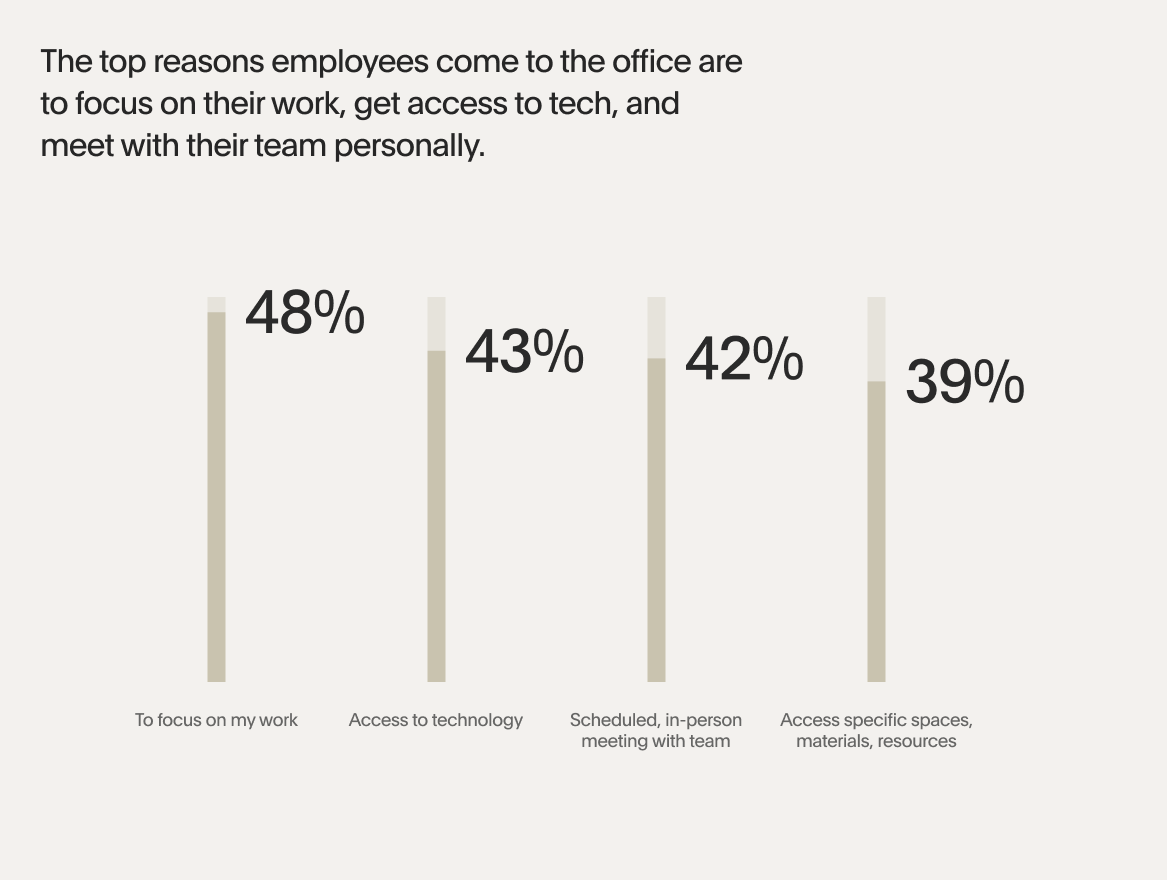
Source: U.S. Workplace Survey 2022, Gensler Research Institute
This requires that offices offer a variety of spaces that each lend themselves to the unique needs of one task or another and deliberately design areas for focus, collaboration, lounging or quiet work, and more casual socializing. As Gensler notes in their survey, “Employees [83 percent] say they would come to the office more often for their ideal mix of experiences.”
Property owners must, therefore, pay attention to a growing demand for workplaces that offer this ideal mix of diverse experiences and, therefore, match the new needs of hybrid work. Implementing adaptable architecture solutions, therefore, allows landlords to offer spaces that fit not only tenants’ unique specifications but also provide a way for them to adapt quickly in changing times. This kind of flexibility incentivizes clients to stick to their leases, even as they evolve.
Flexibility Means Economic Efficiency
According to the Financial Times, in the UK, almost half of office leases are made out for less than a year. Since 2019, long-term leases (10 or more years) have dropped by 70 percent. And short-term leases increased significantly. Leases of 12 months or less accounted for only 15% of all office leases in the UK in Q2019. However, by Q1 2023, this figure had tripled to reach 48%.
For a property owner, that’s a frightening prospect, especially considering almost every new tenant requires refurbishment that average costs hundreds of dollars per square foot. And construction costs are not expected to go down anytime soon. In today’s commercial real estate landscape, it’s becoming more imperative that property owners can move quickly to fill available space. To encourage potential tenants to commit to longer leases, they must feel that they have the flexibility to change with the times.
That means property owners should be able to demonstrate adaptability: spaces are easy to reconfigure, and time and money won’t be lost to lengthy and expensive constructions or remodels.
Property owners can make up for shorter rental periods and high building costs by implementing solutions that allow them to simply rearrange rather than refurbish rental spaces. By using adaptable architecture solutions, landlords can quickly adjust available office space for new tenants or offer new configurations to existing tenants.
The average fit-out process of traditionally constructed offices runs between 8 and 14 weeks and costs even 2,500€. That’s months of lost rental income – even before factoring in the remodeling cost. Adaptable architecture can significantly reduce the amount of time a space sits empty, so property owners can move in new clients with fewer costs while maintaining or increasing occupancy rates.

Source: Cushman & Wakefield Fitout Costs Guide EMEA, 2024
Sustainability is a Must
Employees have started demanding and expecting sustainability from employers, but they’re not alone in joining the green revolution. According to Jaime del Alamo, ESG Value and Risk Vice President at JLL, “Expectations around sustainable buildings are growing at a time when companies are also downsizing and opting for higher quality spaces.” JLL further reports that tenants are, therefore, becoming more sustainability-conscious, as they aim to act in accordance with their Environmental, Social, and Governance (ESG) guidelines and improve reporting. By paying attention to sustainability, owners, and investors both save on costs and “attract eco-minded tenants.”
To persuade green-conscious clients to favor commercial property, it’s important to advertise the benefits of reduced CO2, waste, and other environmental harms that come from refurbishment and traditional constructions. Because adaptable architecture solutions limit the need for costly and environmentally harmful traditional construction, properties that implement them will stand out for efficiency and sustainability. An adaptable office environment can also help with acquiring green certificates like BREEAM or LEED, as they take the long-term lifecycle of the entire building into consideration. Adaptable office solutions mean less waste, CO2, and energy generated by refurbishments.
Users’ well-being and comfort (both mental and physical) are also decisive factors in obtaining these important certifications. Adaptable office solutions are often built with employee well-being in mind and, therefore, make smart solutions in sustainability efforts.
The article is part of “Adaptable Workspaces,” an extensive publication on adaptable office architecture published by Mute. Download the full document here.
